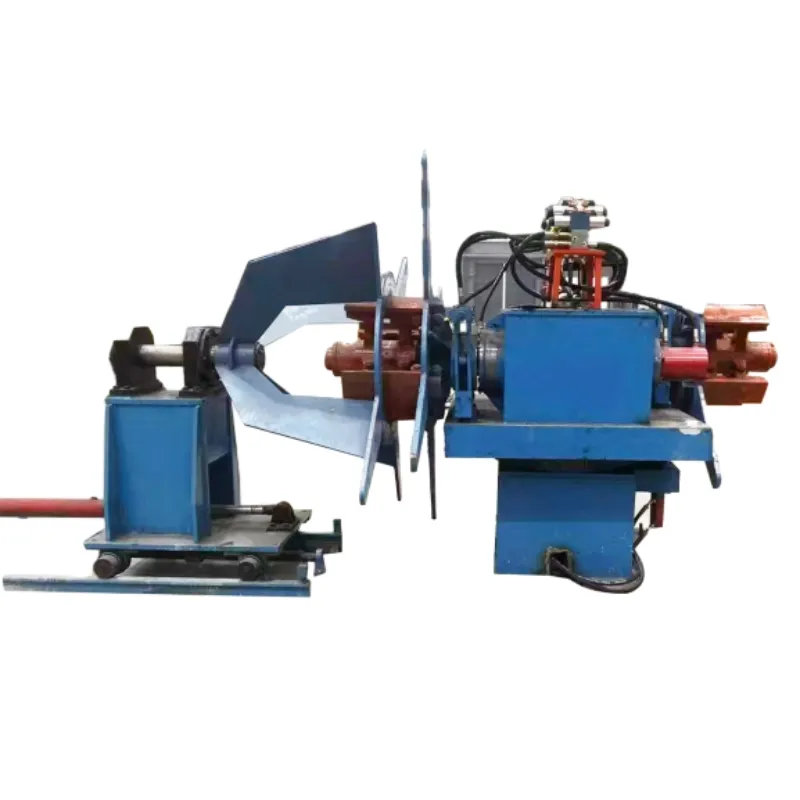squeeze moulding machine
The Advancements and Applications of Squeeze Moulding Machines
Squeeze moulding machines are a significant innovation in the manufacturing sector, particularly in the production of various moulded components. These machines utilize a process that combines the principles of heat and pressure to form materials into desired shapes. The squeeze moulding technique is particularly popular in the processing of thermosetting plastics, but it also finds applications in rubber and other composite materials. This article delves into the workings, benefits, and applications of squeeze moulding machines.
Understanding the Squeeze Moulding Process
Squeeze moulding is a type of compression moulding where preheated material is placed within a heated mould. The machine then applies controlled pressure to squeeze the material into the mould cavity. This process ensures that the material fills every nook and cranny of the mould, resulting in a dense and uniform product. The application of heat in conjunction with pressure helps in achieving the desired curing of thermosetting resins.
The process can be broken down into several key steps
1. Material Preparation The material, typically in the form of pellets or preforms, is heated to a specific temperature that enables it to be pliable without compromising its integrity.
2. Loading the Mould The heated material is then placed into the lower half of the mould.
3. Closing the Mould The upper half of the mould is brought down, squeezing the material into the desired shape.
4. Curing The compressed material is maintained at a specified temperature and pressure to allow for proper curing.
5. Cooling and Ejection After sufficient curing time, the mould is cooled down, and the finished product can be ejected.
Key Benefits of Squeeze Moulding Machines
Squeeze moulding machines offer several advantages that make them an attractive option for manufacturers
- High Precision and Quality The use of pressure ensures that every aspect of the mould is filled, producing high-quality end products with excellent dimensional accuracy
.squeeze moulding machine

- Material Efficiency These machines minimize scrap by optimizing the use of material, making them cost-effective. The precise control over the material flow ensures that excess material is not wasted.
- Versatility Squeeze moulding machines can process a wide range of materials, including various thermoplastics and thermosetting plastics. This versatility allows manufacturers to produce a diverse array of products.
- Short Cycle Times The combination of heat and pressure significantly reduces the time needed for curing and cooling, enabling quicker production cycles.
- Environmentally Friendly By minimizing waste and using efficient processes, squeeze moulding contributes to a more sustainable manufacturing approach.
Applications of Squeeze Moulding Machines
The applications for squeeze moulding machines span numerous industries, showcasing their flexibility and efficacy
1. Automotive Industry Squeeze moulded components are extensively used in automotive applications, from dashboard parts to electrical housings. The strength and durability required in these components make squeeze moulding a preferred choice.
2. Electrical and Electronic Devices The electrical industry benefits from the precision and material properties of squeeze moulded parts, such as connectors and insulators that require high dielectric strength.
3. Consumer Goods Squeeze moulding is used to produce a variety of consumer products, including kitchen appliances, toys, and storage containers. The ability to produce complex shapes with high-quality finishes makes it ideal for these applications.
4. Industrial Equipment Various industrial components, including brackets, clamps, and casing for machinery, are often produced using squeeze moulding due to its robust characteristics.
5. Medical Devices The healthcare industry utilizes squeeze moulding for producing components that require rigorous hygiene standards, such as surgical instruments and housings for medical devices.
Conclusion
Squeeze moulding machines play a crucial role in modern manufacturing, driving efficiency and product quality across a multitude of industries. As technology advances, the capabilities of these machines are likely to expand, leading to even greater applications and improvements in manufacturing processes. Their ability to produce high-quality products at an efficient rate will ensure that squeeze moulding remains an integral part of the production landscape for years to come.
-
High Frequency Straight Seam Welded Pipe Production Line-BzZhou Xinghua Machinery Equipment Manufacturing Co., LTD.|line pipe steel&welded gas pipeNewsJul.30,2025
-
High Frequency Straight Seam Welded Pipe Production Line-BzZhou Xinghua Machinery Equipment Manufacturing Co., LTD.|High Precision&Automated SolutionsNewsJul.30,2025
-
High Frequency Straight Seam Welded Pipe Production Line - BzZhou Xinghua Machinery Equipment Manufacturing Co., Ltd.NewsJul.30,2025
-
High Frequency Straight Seam Welded Pipe Production Line-BzZhou Xinghua Machinery Equipment Manufacturing Co., LTD.|Precision Welding, High EfficiencyNewsJul.30,2025
-
High Frequency Straight Seam Welded Pipe Production Line|BzZhou Xinghua|Precision Welding&EfficiencyNewsJul.30,2025
-
High Frequency Straight Seam Welded Pipe Production Line - BzZhou Xinghua|Precision Engineering&EfficiencyNewsJul.30,2025


